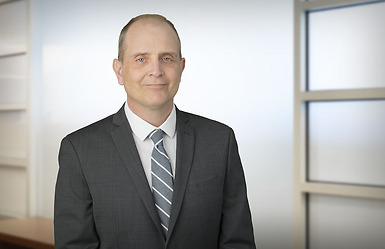Originally published in the July 2024 issue of Bench & Bar of Minnesota Environmental Law Update, Minnesota State Bar Association.
On May 28, 2024, the United States Supreme Court granted certiorari to review a 2023 Clean Water Act (CWA) decision by the Ninth Circuit Court of Appeals, City and County of San Francisco v U.S. Environmental Protection Agency, 75 F.4th 1074 (9th Cir. 2023). As in last year’s high-profile CWA decision, Sackett v. EPA, 598 U.S. 651 (2023), the Court will once again consider — and potentially curtail — the scope of EPA’s authority to regulate pollutant discharges.
The San Francisco case involves the city’s combined sewer system, a wastewater collection system that conveys both sewage and stormwater through shared pipes to a treatment facility. The facility discharges treated wastewater into the Pacific Ocean through multiple discharge points, including a primary discharge point (Point no. 001) that is more than 3 miles from shore. Because of this distance, Point no. 001 is under exclusive federal jurisdiction; so, the city’s National Pollutant Discharge Elimination (NPDES) permit for the treatment facility is issued jointly by EPA and the California Regional Water Quality Control Board for the San Francisco Bay Region, which has delegated authority to implement the NPDES permit program. During heavy precipitation, the city’s treatment facility, like all combined sewer systems, can exceed its capacity and overflow, largely untreated, into the Pacific Ocean. Such combined sewer overflows (CSOs), which typically often contain high levels of pollutants, are subject to additional scrutiny under the NPDES program, and permitted municipalities with combined sewer systems must implement extensive control measures and develop a long-term control plan (LTCP) to control CSOs.
In 2019, EPA and the Regional Water Board reissued the city’s NPDES permit for its treatment facility. In addition to numeric effluent limitations — which specify maximum concentrations or loading of pollutants known to be of concern — the permit contains two non-numeric “narrative” conditions, providing that the city’s discharge shall not (1) “cause or contribute to a violation of any applicable [state or federal] water quality standard, or (2) “create pollution, contamination, or nuisance” as defined by California code. The city challenged these narrative permit conditions as too vague. The city argued, among other things, that the conditions are unlawful because (1) EPA failed to meet its CWA obligation to specify the pollutant limits or operational requirements that will achieve compliance with water quality standards (WQS), and (2) EPA failed to follow its own rules for setting numeric effluent limits based on WQS.
The Ninth Circuit disagreed. The court first pointed to broad language in the CWA that authorizes permitting agencies to “to impose limitations necessary to ensure the discharger's adherence to ‘any applicable water quality standard’” (citing 33 U.S.C. § 1311(b)(1)(C)); this language, the court concluded, does not exclude the San Francisco permit’s broad requirement to comply with all applicable WQS. Second, the court held that the regulation the city claimed EPA and the Board violated — 40 C.F.R. § 122.44(d)(1)(i), which provides NPDES permit limitations must control all pollutants in a proposed discharge that “are or may be discharged at a level which will cause, have the reasonable potential to cause, or contribute to an excursion above any State water quality standard, including State narrative criteria for water quality” (emphasis added) — did not require EPA and the Board to only conduct a so-called “reasonable potential” analysis before establishing a permit effluent limitation. Rather, the court held that “Section 122.44(d)(1) does not set forth an exclusive process for imposing [water-quality-based effluent limitations]. The regulations in this section set forth minimum requirements for imposing pollutant-specific WQBELs. It does not state that the permitting authority cannot set general narrative limitations limits to achieve compliance with WQS.” Accordingly, the Ninth Circuit concluded EPA had authority under the CWA to impose these narrative conditions.
Among the issues the Supreme Court will be asked to consider when reviewing Ninth Circuit’s decision is the potential impacts to the CWA’s “permit shield.” Section 402(k) of the CWA, 33 U.S.C. § 1342(k), provides that “[c]ompliance with a [NPDES] permit issued pursuant to this section shall be deemed compliance” with most CWA requirements for purposes of agency enforcement actions and CWA citizen suits. The key here, is that to be entitled to the enforcement “shield” offered by this provision, a NPDES permit holder must be in compliance with the permit’s terms. The types of narrative conditions imposed in San Francisco’s NPDES permit are so broad and vague, regulated parties will argue, it is almost impossible for a permittee to ever know if it is in “compliance” with the permit and thus protected by the permit shield. By contrast, judging compliance with pollutant-specific numeric effluent limits is straightforward. However, EPA and state agencies such as the Minnesota Pollution Control Agency (MPCA) that issue NPDES permits often rely on narrative permit limits as a “catch-all” means of assuring compliance with WQS to protect rivers, lakes and other waters. For example, at least one recent MPCA NPDES permit contained the following narrative condition, the legality of which that would surely be challenged if the Supreme Court overturns the San Francisco decision: “The Permittee shall operate and maintain the facility and shall control runoff, including stormwater, from the facility to prevent the exceedance of water quality standards specified in Minnesota Rules, chs. 7050 and 7060.”


